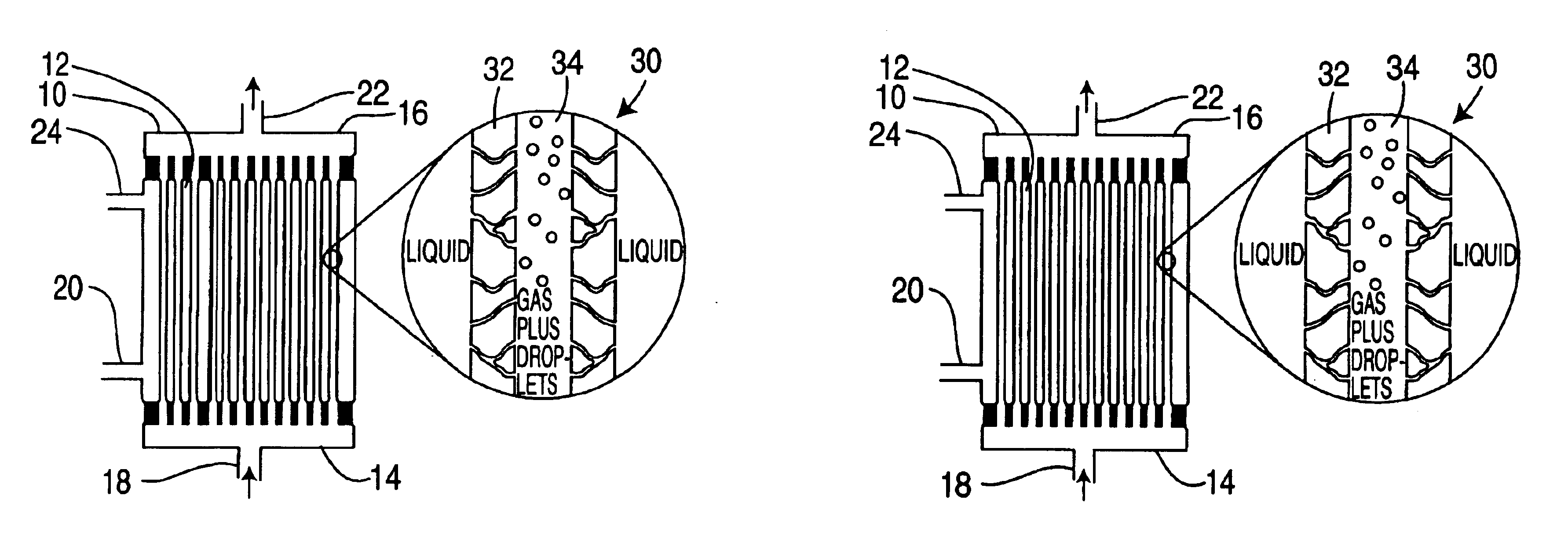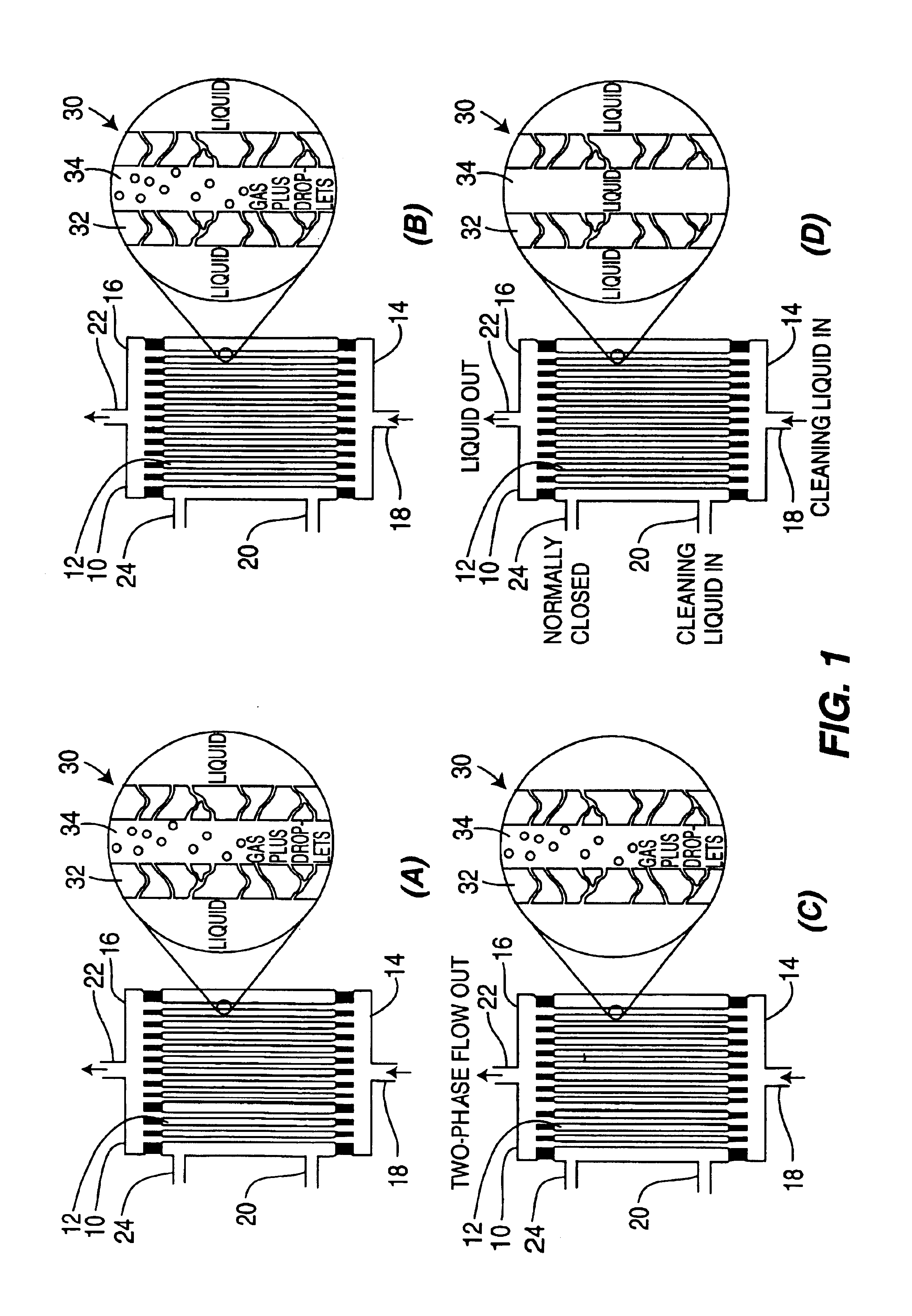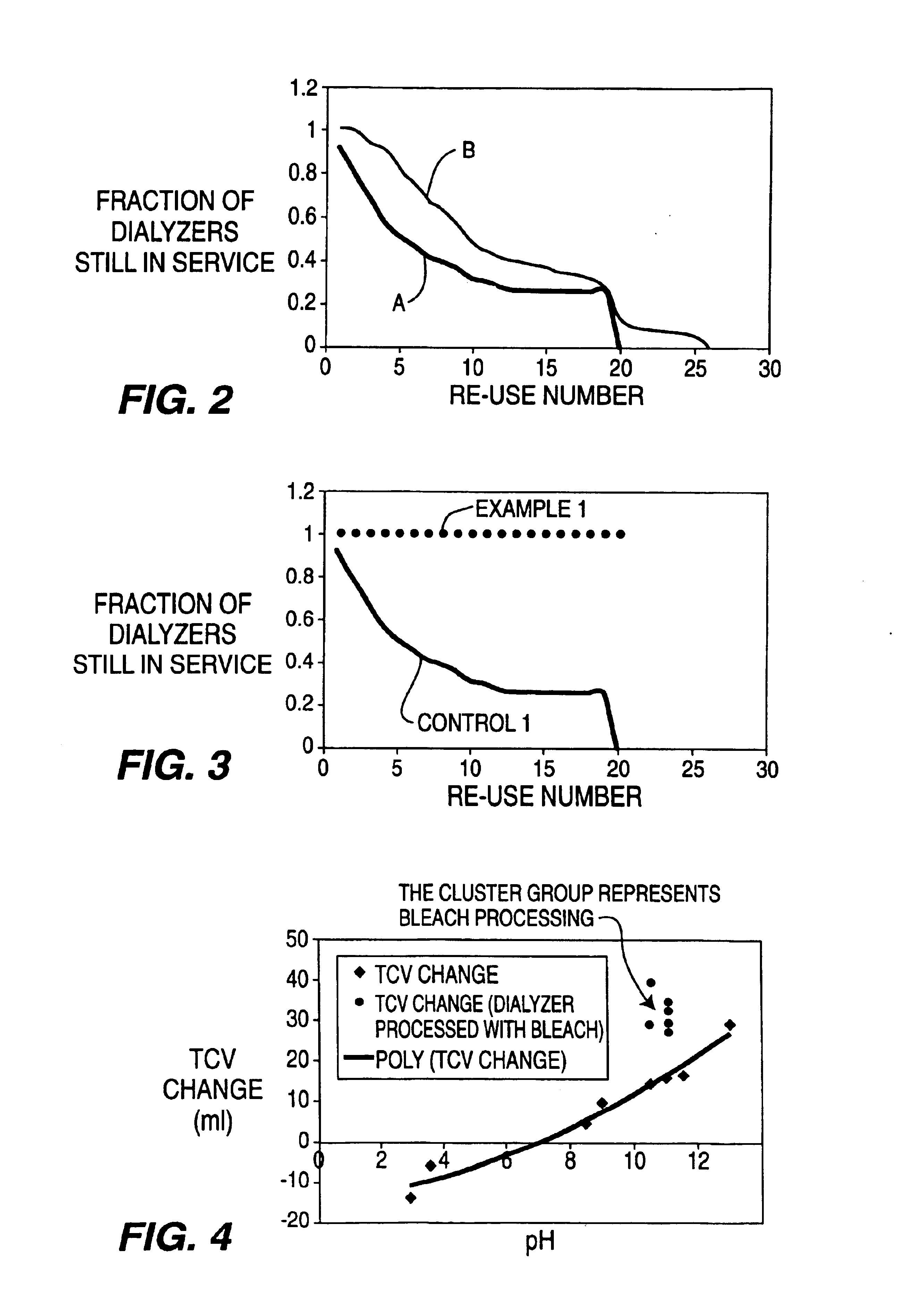Method for cleaning hollow tubing and fibers
a hollow tubing and fiber cleaning technology, applied in the direction of cleaning using liquids, detergent compounding agents, dental surgery, etc., can solve the problems of difficult cleaning and maintenance in a clean condition, difficult to clean the surface, difficult to clean the interior surface of passageways, etc., to achieve superior results, reduce the loss of albumin, and increase the number of re-uses
- Summary
- Abstract
- Description
- Claims
- Application Information
AI Technical Summary
Benefits of technology
Problems solved by technology
Method used
Image
Examples
example 1
[0078]Eight dialyzers (F80A) made by the Fresenius Co. of Bad Homburg, Germany, were cleaned using a method of the invention. The internal diameter of a hollow fiber was 0.2 mm and the length to diameter ratio of each fiber was 1100. A bundle of 15,000 parallel, hollow fibers made of polysulfone , or a derivative thereof, was used. A cleaning agent of 0.225% sodium hypochlorite (NaOCl) and 200 ppm Cremophor EL nonionic surfactant, a castor oil ethoxylate, having a pH of 11.3, was passed into the dialysate side of the dialyzers and mixed with air delivered from the blood / lumen side of the dialyzers to form a mixed phase flow mixture in situ inside the hollow fibers. Cleaning was carried on for 7 minutes, following by rinsing with water, filling with Renalin® and storing for at least 13 hours prior to re-use. The dialyzer was cleaned and reprocessed after each dialysis session.
[0079]This cleaning method was continued for 22 re-uses. The TCV was measured after each reprocessing to ensu...
example 2
[0081]The method of Example 1 was repeated using a cleaning solution of sodium hydroxide (pH 12.6) for 7 minutes on a re-used dialyzer which had a TCV of only 66 ml, except that the solution he was pumped into the dialysate side for 2 minutes and air added from the other side. The alternate side sequence was continued for 5 minutes.
[0082]The calculated Reynolds number of flow in the hollow fibers was about 200, based on the known flow rate and the cross-sectional area of air flow, the fiber diameter and the air viscosity.
[0083]The hemodialyzer was rinsed with water. The TCV was 105 ml, an improvement of 59%. It is believed this improvement was due to the efficient removal of proteins, blood cells and components from the lumens. There was no visible blood or hard protein deposits in the header under the cap regions.
[0084]After rinsing, Renalin® was added as a disinfectant.
[0085]An additional 16 dialyzers were processed as above. The average improvement was 21.1±13.6 ml, or an improve...
example 3
[0087]The method of Example 2 was repeated on a failed hemodialyzer sterilized with Renalin® using as the cleaning solution 0.225% of NaOCl and 200 ppm of a surfactant, Cremophor EL, having a pH of 11.3, for a total cycle of 7 minutes.
[0088]The TCV was 104 ml, an improvement of 45 ml, or 76% increase in TCV.
[0089]Eighteen additional failed hemodialyzers were processed as above. A 29% improvement was obtained, 90% of these failed dialyzers were now usable, with a TCV above the 80% level as required by the FDA.
PUM
| Property | Measurement | Unit |
|---|---|---|
| temperature | aaaaa | aaaaa |
| velocity | aaaaa | aaaaa |
| diameter | aaaaa | aaaaa |
Abstract
Description
Claims
Application Information
 Login to View More
Login to View More - R&D
- Intellectual Property
- Life Sciences
- Materials
- Tech Scout
- Unparalleled Data Quality
- Higher Quality Content
- 60% Fewer Hallucinations
Browse by: Latest US Patents, China's latest patents, Technical Efficacy Thesaurus, Application Domain, Technology Topic, Popular Technical Reports.
© 2025 PatSnap. All rights reserved.Legal|Privacy policy|Modern Slavery Act Transparency Statement|Sitemap|About US| Contact US: help@patsnap.com



